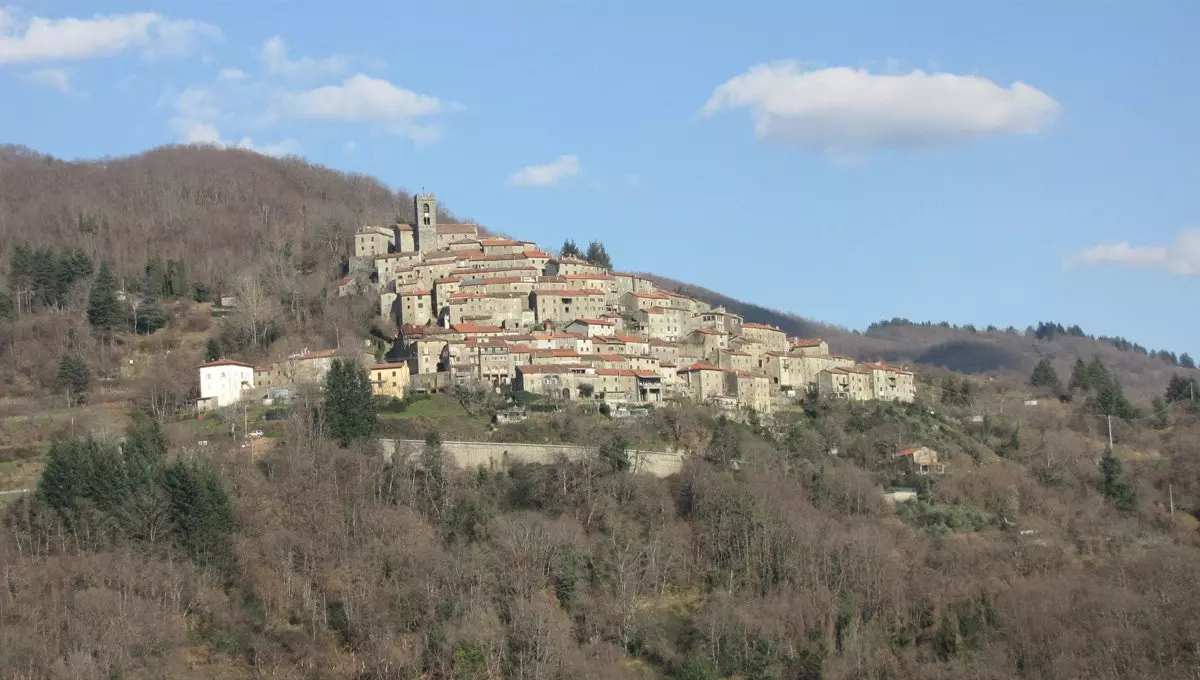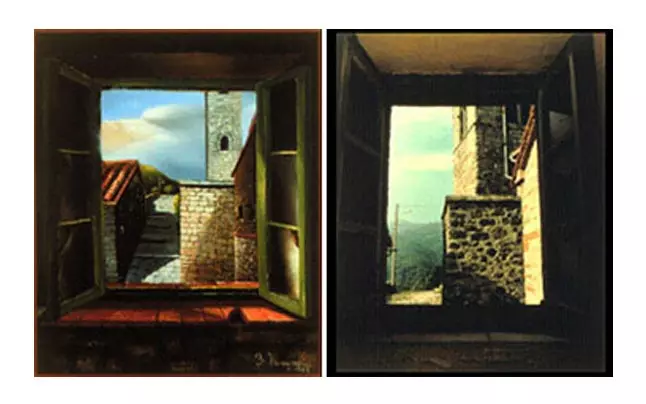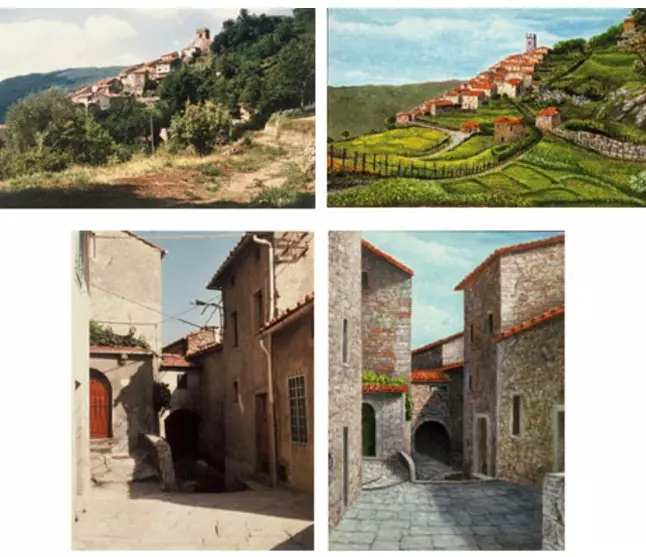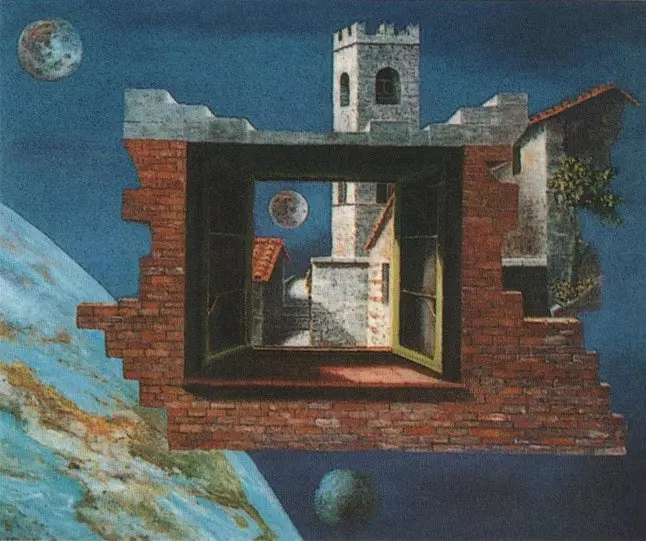
The Tuscan town of Pontito
Franco Magnani was born in Pontito (Italy) in 1934. He lived a happy childhood, running through the cobbled streets of that small tuscan town , until his father died in 1942. Shortly after, the war devastated the area and the Nazis attacked Pontito, forever blurring the happy times. There was no longer anything to do in the charming village, once self-sufficient, and at the age of 15, Franco went to a school far from learn the cabinetmaker's trade. He returned almost five years later, to, at the age of 24, go to work abroad.
In 1965, the Italian decided to stay live in San Francisco. It was precisely then that he suffered a serious unknown illness, for which his doctor prescribed, above all, rest. However, Magnani began to have such vivid dreams that barely let him sleep: before his eyes they passed, with an amazing level of detail, village visions that so many years before he left behind, and he felt that he had the compelling need to Put those images on paper.
He did it effortlessly, despite not having drawn just before , and once he finished his first painting of Pontito, he knew his vision was extraordinarily exact. Furthermore, as he tilted his head, he could even change the angle from which he looked out over the fertile fields, the bell tower of the church, his own house, capturing even aerial shots from the same. Everything kept the charm before the war and the decline of the town, because that was the memory that had remained, intact, in his memory.
The visions became so powerful that he could have them with his eyes open, and during them, he even came to smell and hear the sounds of his childhood. He could not avoid them, but it would even seem that he found a certain comfort in them, to the point that, after a short time, the desire to rebuild the village through his paintings it became an obsession that transfigured even his topics of conversation: already he didn't talk about anything other than his hometown and childhood memories of him, and even he opened a gallery together with his wife named 'Pontito' , where he sold his paintings.

Paintings and photos compared in the Exploratorium exhibition
MEETING WITH OLIVER SACKS
In 1988, the science museum ** Exploratorium ** in San Francisco conducted a memory exhibition in which Magnani's works were displayed alongside real photos of his homeland: they were indistinguishable from one another. That caught the attention of the renowned neurologist Oliver Sacks, that he decided to spend some time with the painter to try to understand the mnemonic phenomenon he was experiencing.
Sacks realized that Franco lived in the past , that he had put aside activities such as going out, traveling or distracting himself due to his obsession. "He is not free to remember wrongly, nor is he free to stop remembering" , writes the neurologist in An anthropologist on Mars. However, the artist usually spoke of return to pontoon
Despite his wish, Magnani could not make up his mind to undertake the journey, as if he somehow thought that, seeing him in person, powerful memories of him would fade , and with them, part of his personality. But in 1990, after several changes in his life (the death of his wife and the acquisition of increasing fame) he headed for Tuscany.

Detail of his exhibition at the Exploratorium
RETURN TO PONTITO
Sacks writes what he felt when he arrived in Pontito: "As he walked through town, he seemed strangely silent , desert, 'as if everyone had left, like the town in my paintings'. For a few moments he savored the feeling of reliving scenes from his memory, and then he had a feeling of painful loss : ‘He missed the chickens, the sound of the donkeys’ shoes. It was like a dream. everyone was gone ”.
The state of decline in which the town had plunged, moreover, made him have a powerful premonition: “ One day, Pontito will be contaminated , overgrown with weeds. There will be nuclear war. So I will put it in space, to preserve it for all eternity. And that he did in many of the paintings which he painted thereafter.
However, the colors of dawn and the ancient stones, which still remained in his place, made him reconcile with his home. To this it contributed that his former neighbors and relatives recognized him and congratulate him on his paintings. "I gave those people their memory back," he told Sacks, for not even the oldest of the town could remember the daily life of the 30's and 40's like him. “I am going to build an art gallery, a small museum, something to bring people back to this town.”
Finally, it was carried out an exhibition in the streets of Pontito, in which Magnani's paintings were placed next to the places portrayed, but he didn't come back to see her . He had done it a few years before, and he would do it a few years later, but after each visit, he noticed that the new memories fought against the old ones, and in some way he preferred not to force them, although his art in the end emerged invigorated from these struggles. His paintings, however, did travel all over the world. , and the picturesque Tuscan village has since become a pilgrimage center for many artists.
"I don't think there is any merit in painting these pictures" Franco wrote to Sacks shortly after meeting him. “I have painted them by Pontito… I want everyone to know how fantastic and beautiful it is . Perhaps in this way he will not die, although he is already in full agony. Perhaps, at least, my paintings will keep his memory alive”. Definitely, he has achieved it.

Pontito, preserved forever in time and space
